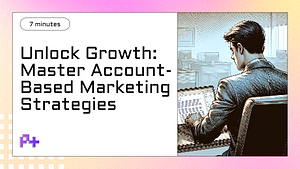1. What is Sales Enablement and Why is it Important?
Sales enablement refers to the set of processes, tools, and resources that equip sales teams with the knowledge and skills they need to effectively engage with potential customers. This comprehensive approach encompasses training, content creation, and technology integration, all designed to enhance the sales experience. By providing sales representatives with the right information and resources at the right time, sales enablement helps them to be more productive and efficient in their efforts to close deals. Ultimately, it bridges the gap between marketing and sales, ensuring that both teams work cohesively toward shared business objectives.
The importance of sales enablement cannot be overstated in today’s competitive market landscape. As consumers become increasingly informed and discerning, sales teams must adapt their strategies to meet the evolving expectations of buyers. Sales enablement not only empowers representatives with relevant content—such as case studies, product demos, and pricing information—but also allows them to personalize their approach based on insights gathered from customer interactions. This tailored engagement fosters stronger relationships with prospects and enhances the overall customer experience, leading to higher conversion rates and increased revenue.
Moreover, effective sales enablement drives measurable results for organizations. By implementing a structured sales enablement strategy, businesses can track key performance indicators such as sales cycle length, win rates, and customer retention. This data-driven approach enables organizations to identify areas for improvement and refine their sales tactics accordingly. As a result, companies that prioritize sales enablement not only see improved sales performance but also cultivate a culture of continuous learning and development within their teams, ultimately positioning themselves for long-term success in their industries.
2. Core Elements of a Successful Sales Enablement Strategy
A successful sales enablement strategy is built on several core elements that work together to empower sales teams and enhance their performance. First and foremost, it is essential to establish a clear understanding of the buyer’s journey. This requires comprehensive buyer personas that outline the target audiences needs, pain points, and preferences. By aligning the sales enablement content and tools with these personas, organizations can ensure that their sales representatives are equipped with the right resources at each stage of the buying process. This alignment not only boosts the effectiveness of sales interactions but also fosters a more personalized customer experience.
Furthermore, effective training and ongoing education are crucial components of a robust sales enablement strategy. Regular training sessions that focus on product knowledge, sales techniques, and industry trends empower sales teams to meet their targets confidently. Incorporating a variety of training formats, such as workshops, webinars, and e-learning modules, can cater to different learning styles and help reinforce knowledge retention. Additionally, providing access to a centralized repository of resources—including case studies, competitive analyses, and objection-handling guides—ensures that sales representatives can quickly find the information they need to close deals successfully.
Lastly, leveraging technology plays a pivotal role in enhancing sales enablement efforts. Tools such as Customer Relationship Management (CRM) systems, content management platforms, and analytics software can streamline processes and provide valuable insights into sales performance. By analyzing data on customer interactions and sales outcomes, organizations can refine their strategies and make informed decisions. Integrating these technologies into the sales enablement framework not only boosts efficiency but also helps teams adapt to changing market dynamics and buyer behaviors, ultimately leading to a more successful sales enablement strategy.
3. Best Practices for Implementing Sales Enablement in Your Organization
Implementing sales enablement in your organization can significantly enhance your sales teams efficiency and effectiveness. To start, its crucial to establish a clear strategy that aligns with your business goals. This involves identifying the specific needs of your sales team and understanding the challenges they face. Conducting thorough research, including surveys and interviews with sales reps, can help pinpoint the resources and tools they require to succeed. By tailoring your sales enablement strategy to meet these needs, you ensure that the content, training, and tools provided are relevant and immediately applicable, fostering a more engaged and productive sales force.
Another best practice for successful sales enablement implementation is to create a centralized knowledge hub. This hub should house all sales materials, including product information, case studies, and competitive intelligence, making it easily accessible to your sales team. Utilizing a content management system can streamline this process, allowing for efficient updates and organization of resources. Additionally, incorporating a feedback loop where sales reps can share their experiences and suggest improvements can enhance the relevance and usefulness of the materials provided. By ensuring that your team has quick access to the right information, you empower them to engage prospects more effectively and close deals faster.
Lastly, it’s essential to invest in ongoing training and support as part of your sales enablement strategy. This includes regular workshops, webinars, and coaching sessions that keep your sales team updated on the latest products, industry trends, and selling techniques. Emphasizing continuous learning helps to reinforce the skills necessary for success in an ever-evolving market. Moreover, leveraging technology such as sales enablement platforms can offer personalized training paths and track progress, ensuring that your team remains skilled and confident. In sum, by establishing a strategic approach, centralizing resources, and committing to ongoing training, you can create a robust sales enablement framework that drives success for your organization.
4. Essential Sales Enablement Tools and Technologies
In the competitive landscape of modern business, leveraging effective sales enablement tools and technologies is crucial for driving revenue and enhancing team performance. Sales enablement encompasses a range of strategies and resources designed to equip sales teams with the knowledge and tools they need to engage potential customers and close deals efficiently. Among the essential tools in this domain are Customer Relationship Management (CRM) systems, content management solutions, and sales training platforms. These tools not only streamline processes but also provide valuable insights that can significantly impact sales outcomes.
CRM systems, such as Salesforce or HubSpot, serve as the backbone of sales enablement by centralizing customer data and interactions. They facilitate tracking of sales activities, management of leads, and analysis of customer behavior. With the integration of CRM tools, sales representatives can personalize their outreach efforts, ensuring that communications resonate with potential clients. Moreover, advanced analytics provided by these systems allow teams to identify trends, optimize their strategies, and forecast sales more accurately, making them indispensable for any sales enablement initiative.
In addition to CRM software, content management solutions play a vital role in sales enablement by organizing and delivering essential sales materials. Tools like Highspot or Seismic allow sales teams to easily access product information, case studies, and presentations, ensuring they have the right resources at their fingertips during customer interactions. Furthermore, incorporating sales training platforms, such as Brainshark or Lessonly, can boost team performance by providing ongoing education and skill development. By investing in these essential sales enablement tools and technologies, organizations can empower their sales teams to perform at their best, ultimately driving growth and increasing conversion rates.
5. The Future of Sales Enablement: Trends and Innovations
The landscape of sales enablement is continually evolving, shaped by advances in technology and shifts in buyer behavior. One of the most significant trends is the integration of artificial intelligence (AI) and machine learning into sales enablement tools. These technologies are not only enhancing data analysis but also personalizing the sales experience for both sales teams and customers. By leveraging AI, organizations can gain insights into customer preferences, predict purchase behaviors, and deliver tailored content that resonates with their audience. As a result, sales professionals are becoming more efficient, focusing their efforts on qualified leads and personalized communication, ultimately driving higher conversion rates.
Another notable trend in the future of sales enablement is the rise of remote and hybrid selling environments. The COVID-19 pandemic accelerated the shift towards virtual interactions, prompting companies to adapt their sales enablement strategies accordingly. Tools that facilitate seamless virtual collaboration, such as video conferencing and digital sales rooms, are becoming essential. These innovations allow sales teams to engage prospects in meaningful ways, regardless of location. Additionally, as remote work continues to be prevalent, organizations are investing in training programs that equip sales representatives with the skills needed to succeed in a virtual selling landscape. This adaptability not only enhances the sales process but also fosters stronger relationships with customers.
Lastly, the emphasis on continuous learning and development is set to shape the future of sales enablement. As the market changes rapidly, sales teams must stay informed about new products, industry trends, and effective selling techniques. Companies are increasingly adopting learning management systems (LMS) and on-demand training resources to support ongoing education. This focus on skill enhancement not only boosts team morale but also ensures that sales professionals are well-equipped to meet the challenges of an ever-evolving marketplace. By prioritizing continuous learning, organizations can foster a culture of growth and adaptability, which is essential for long-term success in sales enablement.



